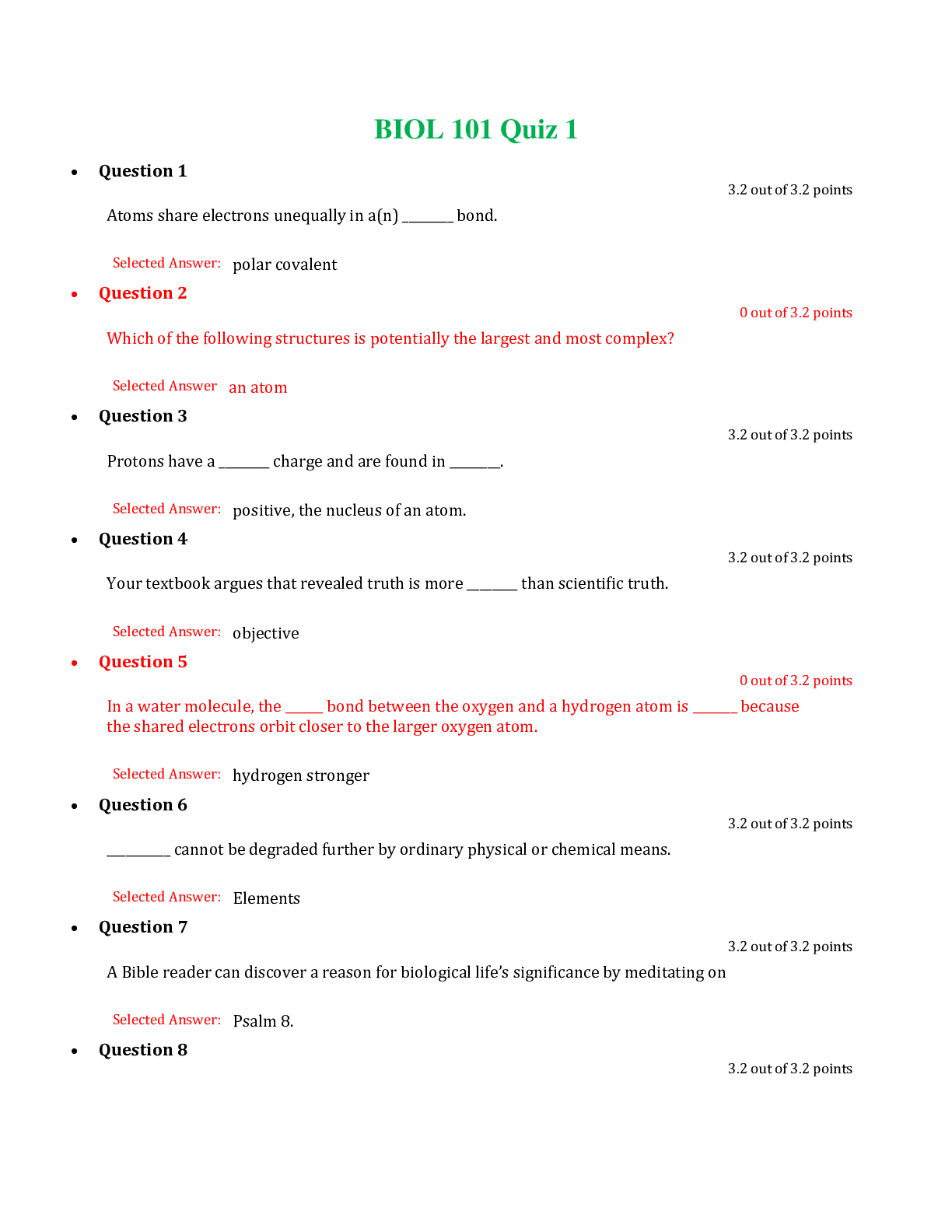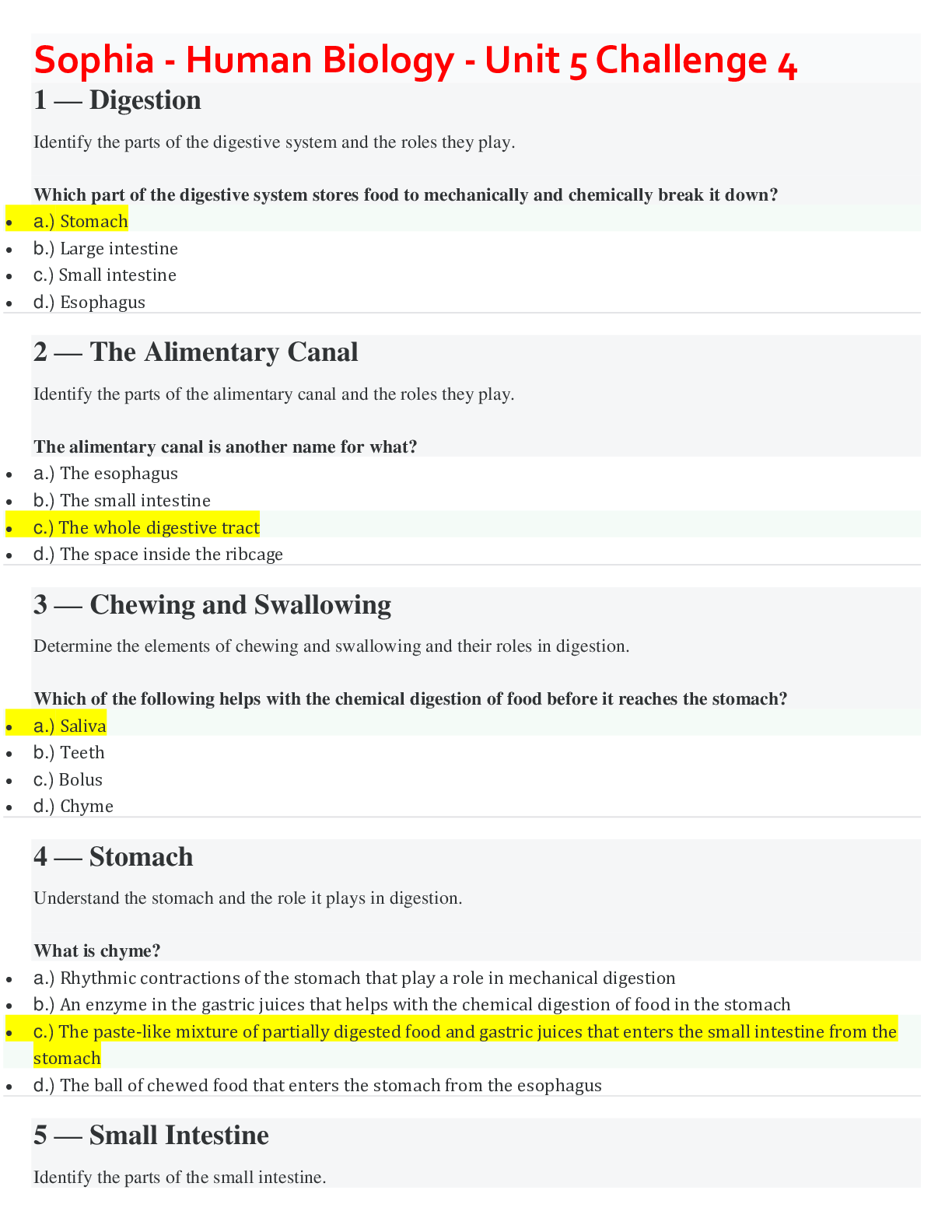Biology > EXAM > Ashford University - SOPHIA PATHWAY Sophia - Human Biology - Unit 3 Challenge 3_Graded A (All)
Ashford University - SOPHIA PATHWAY Sophia - Human Biology - Unit 3 Challenge 3_Graded A
Document Content and Description Below
Sophia - Human Biology - Unit 3 Challenge 3 1 — Sensory Receptors Identify which sense receptor is involved in a real-life example. Jordan falls and scrapes his knee. Which type of receptor al... erts the brain that the body has been damaged? • a.) Osmoreceptor • b.) Nociceptor • c.) Mechanoreceptor • d.) Chemoreceptor 2 — Somatic Sense Determine how your body detects and interprets somatic sensations. What detects touch, pressure, heat, cold and pain? • a.) Somatosensory cortex • b.) Free nerve endings • c.) Sensory adaptation • d.) Encapsulated receptors 3 — Smell & Taste Identify the basics of smell and taste. Gustation is the technical term for ___________. • a.) smell • b.) taste • c.) sensory input from chemoreceptors • d.) the sensation created by taste and smell working together 4 — Ear Anatomy and Hearing This lesson will give an overview of the anatomy of the human ear. The __________ is the jelly-like structure within the ear that hair cells press against in response to pressure waves, helping the body determine the intensity of a sound. • a.) tectorial membrane • b.) cochlea • c.) vestibular apparatus • d.) tympanic membrane 5 — Disorders of the Ear Identify disorders of the ear and their characteristics. Which of these is a cause of vertigo? • a.) A cold that affects the tympanic membrane • b.) A genetic disease resulting in the death of the auditory nerve • c.) A disorder of the vestibular apparatus • d.) Over-stimulation of hair cells in the ear 6 — Vision Determine the parts of the eye and their functions. The vitreous humor is the part of the eye that ____________. • a.) controls visual acuity • b.) transmits light to the lens • c.) sends visual signals to the brain for interpretation • d.) helps maintain its shape 7 — Disorders of the Eye Identify common disorders of the eye. Which disorder occurs when the lens of the eye doesn't curve evenly, affecting how light is focused in each eye? • a.) Astigmatism • b.) Cataracts • c.) Conjunctivitis • d.) Glaucoma [Show More]
Last updated: 2 years ago
Preview 1 out of 2 pages

Buy this document to get the full access instantly
Instant Download Access after purchase
Buy NowInstant download
We Accept:

Reviews( 0 )
$10.00
Can't find what you want? Try our AI powered Search
Document information
Connected school, study & course
About the document
Uploaded On
Aug 19, 2020
Number of pages
2
Written in
Additional information
This document has been written for:
Uploaded
Aug 19, 2020
Downloads
0
Views
151

























